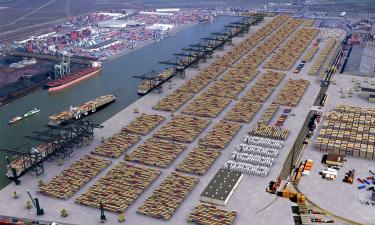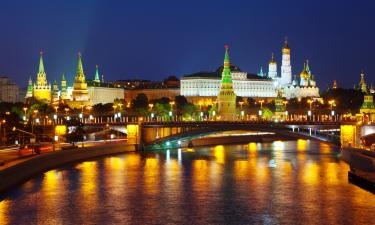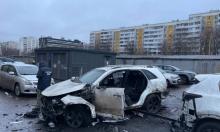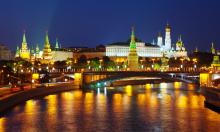US torture of John Walker Lindh exposed as frame-up continues
Defense attorneys for John Walker Lindh filed documents describing how, after barely surviving atrocities that claimed the lives of hundreds of his companions, the so-called “American Taliban” was tortured while the FBI wrangled statements out of him in violation of his Fifth Amendment right not to be a witness against himself. The new filings are for a crucial hearing on July 15 to determine whether statements made by Lindh after his capture with an Afghan Army unit will be suppressed or allowed into evidence at trial.
Lindh, who turned 21 three months ago, was found barely alive among the handful of Taliban prisoners who survived the US-backed massacre at Qala-i-Jangi fortress near Mazar-i-Sharif, Afghanistan late last November. The upcoming suppression hearing is widely viewed as pivotal in the case. Prosecutors acknowledge that they have little evidence outside of Lindh’s own statements to support their charges that he conspired to murder US citizens and illegally supported terrorist organizations. The charges carry sentences ranging from decades to life in prison. Trial is set to begin in Alexandria, Virginia, within a few miles of the Pentagon, on August 26.
The defendant’s papers include a “Proffer of Facts in Support of Defendant’s Suppression Motions” based principally on information turned over by the government in “discovery,” supplemented with information from news stories and details provided by Lindh himself. (The proffer can be found at https://www.lindhdefense.info/20020613_FactsSuppSuppress.pdf)
The defense document explains that Lindh’s journey to Afghanistan was part of a phenomenon which “dates back to the 1980s, when Afghan and foreign mujahideen, funded in large part by the Untied States” fought against Soviet troops. After rejecting an invitation to participate in operations outside Afghanistan, Lindh became a “member of the Army of the State of Afghanistan” and joined the Taliban front lines in the Takar region of Northern Afghanistan on September 6, 2001, the week before the terrorist attacks on the World Trade Center and the Pentagon. He stayed there until early November, when forces under the control of the notorious warlord Abdul Rashid Dostum, backed by US firepower, routed the Taliban troops.
Lindh’s unit retreated on foot 50 miles to Kunduz in two days. There was little food and water, and the weather was very cold. Lindh and about 100 others became separated from the main group, and were mistaken for Northern Alliance soldiers when they tried to reunite. About one-third of the men with whom Lindh was traveling were killed by the resulting “friendly fire.”
Lindh’s unit surrendered to Dostum after 10 days trapped in Kunduz. A deal was made for the soldiers to receive safe passage to Herat, then still under Taliban control. Instead, the prisoners were taken to the Qala-i-Jangi fortress outside Mazar-i-Sharif. One of the detained Afghan soldiers detonated a grenade as he was being unloaded from a truck. As a result, the remaining prisoners, including Lindh, were crammed into a basement, and a grenade was dropped down an air duct, killing and wounding several men. Dostum’s guards made the prisoners stay in the basement. Unable to find a space in which to lie down, Mr. Lindh spent the night without sleep, crouched near a corner that was used as a toilet by the other men in the basement.
The next day, the prisoners were led out of the basement and into the yard. Their arms were bound behind their backs, and they were made to sit in rows. Dostum’s guards walked among them, randomly hitting and kicking prisoners. Lindh was struck in the back of the head and almost lost consciousness. CIA agent Johnny “Mike” Spann and another agent, working with Dostum’s men, singled out Lindh and questioned him at gunpoint. The episode was captured on videotape and records the Americans saying to Lindh, “The problem is, he needs to decide if he wants to live or die, and die here ... we’re just going to leave him, and he’s going to f—-ing sit in prison the rest of his f—-ing short life. It’s his decision, man.We can only help the guys who want to talk to us.” Lindh remained mute throughout the questioning.
Later that day a prisoner again detonated a grenade. This time, Northern Alliance troops opened fire, mowing down the rows of bound prisoners with automatic weapons. In the ensuing pandemonium Spann was killed under circumstances that have never been made public. It seems not unlikely he was caught in Northern Alliance crossfire. In any event, there is no evidence that Lindh had anything to do with his death.
Lindh was shot in the leg while fleeing the carnage. He lay on the ground for 12 hours, surrounded by corpses and pretending to be dead, while US aircraft bombed the compound, blowing living and dead prisoners to bits. In the middle of the night, Lindh and several other survivors in the yard made their way back into the basement. Wounded, starving and freezing, Lindh was trapped there for the next seven days. Dostum’s troops periodically dropped grenades down air shafts, killing many. One wounded Lindh with shrapnel.
On the fourth day, Northern Alliance troops poured gasoline into the basement and ignited it, incinerating several men. Then Dostum’s soldiers fired rockets into the areas of the basement where the men had fled to escape the flames, littering the area with body parts.
On the sixth day, Dostum’s troops flooded the basement with near freezing water. According to government disclosures, an eyewitness said that the water “was about waist high for one full day. Those who were too injured to stand drowned, and the water was full of blood and waste.” According to the proffer, “Mr. Lindh and others were forced to drink the water to stay alive. Unable to stand without assistance, Mr. Lindh alternated between leaning on a stick and a fellow soldier to keep from falling under the water and drowning. At least once, Mr. Lindh tripped over a dead body and was submerged in the freezing water, which resulted in his suffering hypothermia.”
On December 1, “wounded, starved, frozen and exhausted,” Lindh emerged from the basement with the other survivors, less than 85 of the more than 300 prisoners brought to the Qala-i-Jangi fortress the week before. Dostum’s forces bound his arms behind his back once again, and he was crammed into a metal shipping container with other wounded and sick prisoners for six hours, doubled over with abdominal cramps caused by drinking the polluted water in the basement.
Lindh was transferred to an open-air truck full of dying prisoners and learned that there were media and Red Cross representatives in the area. One told him that Dostum would have killed all the survivors were they not there. Still wet from the basement, Lindh was driven three hours through the cold night to Sheberghan, where he was taken by stretcher into a room about 10 feet by 10 feet, where he was left with approximately 15 other dead or dying prisoners.
It was there that CNN correspondent Robert Pelton found Lindh and began questioning him on videotape. According to the proffer, Lindh at first refused to be interviewed, but relented after Pelton arranged for him to receive food and medical attention from the US military. He was moved into a room without other prisoners. While armed US soldiers stood guard, a medic removed Lindh’s clothes and began treatment. As he answered Pelton’s questions, Lindh was receiving morphine and other medications intravenously. The interview was widely shown on CNN during the month of December.
Pelton told Lindh’s parents about his predicament. They quickly retained prominent San Francisco trial lawyer James Brosnahan, who immediately faxed demands that the US government not interrogate Lindh until they consulted him, and offered to travel to Afghanistan to meet with his new client. Although these letters were faxed to US Attorney General John Ashcroft and other government officials on December 3, Brosnahan was not allowed to speak to his client until January 25, almost two months later, moments before Lindh’s first court appearance in the United States.
Following the Pelton interview, Lindh was interrogated by a member of the US Special Forces at Dostum’s compound without first being advised of his right to remain silent and his right to counsel. The next day, the same Special Forces officer bound Lindh’s hands with rope and placed a hood over his head. Lindh was taken to a schoolhouse in Mazar-i-Sharif, where he was held in a room with the windows covered so that he could not tell the time of day. Round-the-clock armed guards taunted Lindh with epithets like “shitbag” and “shithead.” Lindh was given some food, but was always left hungry. Military interrogations began again, lasting several hours and continuing for several days. Lindh was not advised of his constitutional rights, and when he asked for a lawyer, he was told none was available. His bullet wound was left untreated, “to preserve the chain of custody” of the bullet for its use as evidence at trial.
On December 7, heavily armed US soldiers blindfolded and handcuffed Lindh, scrawled “shithead” across the blindfold, and posed with him for photos. One US soldier told Lindh that he was “going to hang,” and then the pictures could be sold and the proceeds donated to a Christian organization. Another told Lindh that he wanted to shoot him then and there. Lindh was cuffed so tightly that his wrists were scarred, and his hands were numb for months.
Lindh was flown to a Marine airbase in the Afghanistan high desert dubbed Camp Rhino. According to a statement provided in government discovery, a Navy doctor claims a US Special Forces officer told him at Camp Rhino that “sleep deprivation, cold and hunger might be employed” while Lindh was interrogated. That certainly seems to have been the case. Once at Camp Rhino, Lindh’s guards stripped him naked, and fastened him to a stretcher with duct tape and placed him in a metal shipping container. Conditions inside the container would have tested the endurance of anyone, much less someone in Lindh’s weakened condition. There was no light, heat or insulation. Two small holes provided all the ventilation. Guards taunted Lindh through the holes, threatening to spit in his food. Lindh’s hands were tied together. At first he was fully exposed, but eventually the guards covered him with a blanket and placed one underneath him.
For two days, Lindh was provided minimal food and medical attention. He was freezing cold and in constant pain because of the wrist restraints that were too tight. The loud noise of an electric generator echoed in the container. He could not move. Lindh was not even released from the stretcher when he needed to urinate. Instead, guards propped him upright.
On December 9, Lindh was dressed in a hospital gown and taken into a room or tent. When his blindfold was removed, an FBI agent presented him with a form waiving his constitutional rights. The note Lindh’s parents sent to him through the Red Cross, advising that they had retained a lawyer for him, was not delivered. Although Brosnahan was still trying to reach him, the agent repeated than no attorneys were available. Desperate to improve the conditions of his confinement, Lindh signed the waiver and answered the FBI agent’s questions.
The FBI interviews continued for two days. There is no tape or transcript of the interrogations, only the agent’s summary. After the interrogations, Lindh’s conditions improved somewhat. On December 14, he was transferred to the USS Peleliu, where he was treated for dehydration, hypothermia and frostbite. The next day the bullet was removed from his leg. There was no further questioning.
Under existing legal precedent, especially the landmark Miranda decision recently reaffirmed by the US Supreme Court, none of Lindh’s statements can be considered voluntary and therefore admissible over a Fifth Amendment challenge. This outcome was in fact discussed in a series of US Justice Department emails that were leaked to the media after being turned over to United States District Judge Thomas S. Ellis III, who refused to release them to the Lindh defense.
According to the email, one Justice Department lawyer wrote to another on December 7, the day Lindh landed at Camp Rhino, that “The FBI wants to interview American Taliban member John Walker some time next week.... Walker’s father retained counsel for him. The FBI wants to question Walker about taking up arms against the US. I consulted with a Senior Legal Advisor here at PRAO and we don’t think you can have the FBI agent question Walker. It would be a pre-indictment, custodial overt interview, which is not authorized by law.”
The government prosecutors will no doubt be filing their own papers soon, disregarding this assessment and arguing that Lindh’s Camp Rhino waiver of his constitutional rights to remain silent and consult an attorney was “voluntary.” In presenting their claim to Judge Ellis, they will be pushing on an open door. Ellis has openly sided with the prosecutors at every hearing in the case so far, and can be expected to do so at the suppression hearing as well.
At the last hearing, which was held on June 17, Ellis summarily denied seven separate defense motions, rejecting claims that Lindh was a legal combatant entitled to Geneva Convention protections, and that his activities with the Taliban were protected by the First Amendment’s guarantees of freedom of religion and association.
Demonstrating that he has already judged Lindh and found him guilty, Ellis dispensed with the last argument by stating that “The First Amendment freedom of association is no license to provide terrorists with support.” He then refused to move the venue of the trial from near the Pentagon, where almost 200 people were killed on September 11, or to dismiss the case because of the prejudicial and inappropriate pretrial comments made by John Ashcroft.
Perhaps the most interesting defense motion called for Ellis to dismiss the charges against Lindh because of “selective prosecution.” Lindh’s lawyers filed voluminous documents establishing that he is the only person ever prosecuted for supporting the Taliban, even though many firms and individuals had continued doing business with the Taliban after Clinton issued the executive order Lindh is accused of violating.
The most obvious example is the Unocal pipeline project, which was not finally abandoned until August 2001. The prosecutors’ opposition to the motion states: “the defendant himself notes that some of his ‘evidence’ suggests that the government supported Unocal’s pipeline project, which would have brought natural gas from Turkmenistan to Pakistan by crossing through Afghanistan—a route purportedly preferable to alternative routes through Russia or Iran. The defendant cannot possibly suggest that the executive branch of government may not consider the national interest when deciding whether to bring criminal charges.”
In other words, the oil monopolies and other sections of the corporate elite could violate the law with impunity, because their drive to reap profits by currying favor with the Taliban was deemed to be in “the national interest.” Lindh, on the other hand, can be condemned to lifetime imprisonment because he lacks the connections to the Bush administration enjoyed by the oil executives and makes a convenient scapegoat.
Despite his riveting personal drama, Lindh himself is a relatively insignificant figure. His presence in Afghanistan had no effect on the outcome of the US military campaign, and there is no evidence that he had any involvement in terrorism or fired a single shot at American forces.
He is being prosecuted not only to make an example of him and intimidate others who might oppose US policies, but also to condition public opinion to even more repressive and dictatorial measures, such as those presently being used against Jose Padilla. The Brooklyn-born man, alleged to have participated in a “dirty bomb” plot, is being held incommunicado in a military brig without even the pretenses of due process.
John Andrews World Socialist Web Site www.wsws.org
Subscribe to Pravda.Ru Telegram channel, Facebook, RSS!




